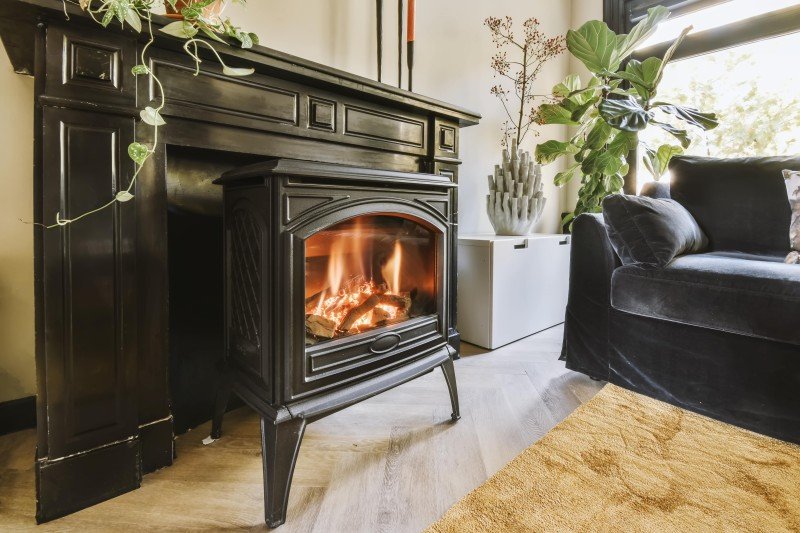Best Value Fireplaces: An In-Depth Guide
The fireplace has actually long been regarded as the heart of a home, providing warmth, atmosphere, and a centerpiece for social gatherings. However, navigating through different alternatives can be overwhelming, particularly with budget plan constraints in mind. This article provides a helpful guide on the very best value fireplaces, detailing their types, features, and benefits to assist property owners make a wise option.
Types of Fireplaces
Fireplaces come in a range of designs and types, each with various characteristics, expenses, and advantages. Here's a comprehensive take a look at the most common kinds of fireplaces available in the market today.
| Type of Fireplace | Description | Average Cost | Pros | Cons |
|---|---|---|---|---|
| Wood-Burning | Burn logs to develop heat and atmosphere. | ₤ 1,500 - ₤ 5,000 | Authentic experience, natural heat | Requires regular upkeep, less efficient |
| Gas Fireplaces | Uses natural gas or propane to produce heat. | ₤ 2,000 - ₤ 5,000 | Easy to use, cleaner than wood | Minimal to gas supply, setup expenses |
| Electric Fireplaces | Imitates flames with LED innovation and produces heat through electrical power. | ₤ 200 - ₤ 3,000 | Easy installation, installation versatility | Less genuine feel, greater operating expense |
| Pellet Stoves | Usage compressed wood or biomass pellets, supplying an environment-friendly choice. | ₤ 3,000 - ₤ 4,500 | Efficient, low emissions | Requirements electrical energy to run, needs storage for pellets |
| Ethanol Fireplaces | Burns ethanol fuel, producing flames that don't require a chimney. | ₤ 300 - ₤ 2,500 | No vents needed, portable | Higher fuel cost, safety issues |
Factors to Consider When Choosing a Fireplace
Choosing the right fireplace is not almost aesthetic appeals; it also includes useful considerations. Here are important factors to remember:
1. Spending plan
- Identify just how much you are prepared to invest. Cozy Fireplaces in mind that installation and upkeep costs can accumulate.
2. Area and Size
- Guarantee the fireplace fits well within the space, thinking about both the space offered and the heating requirements.
3. Fuel Type
- Choose the fuel source based on accessibility, expense, and the kind of ambiance you wish to attain.
4. Efficiency
- Decide for systems with high-efficiency rankings to guarantee you are getting the most value for your cash in regards to heat output.
5. Aesthetic Appeal
- Choose a design and style that complements existing decoration and enhances the general appeal of the area.
6. Regulations
- Be mindful of regional guidelines, allows, and building regulations that might affect your fireplace setup.
Top Best Value Fireplaces
Based upon customer reviews, professional opinions, and general value for cash, here are a few of the very best value fireplaces currently available in the market:
1. DuraVent Pellet Stove
- Type: Pellet
- Typical Cost: ₤ 2,000
- Emphasizes: Highly efficient with low emissions, making it an exceptional alternative for environmentally-conscious property owners.
2. Napoleon B36NTR-1
- Type: Gas
- Average Cost: ₤ 2,500
- Emphasizes: This fireplace is visually attractive and extremely efficient, with a streamlined style and adjustable flame.
3. Duraflame Electric Heater Stove
- Type: Electric
- Average Cost: ₤ 200
- Highlights: Affordable and portable, perfect for smaller areas or including atmosphere to a space without permanent installation.
4. Real Flame Juliet Gel Fireplace
- Type: Ethanol
- Average Cost: ₤ 300
- Emphasizes: A trendy option for modern spaces that needs no venting, making it versatile and easy to set up.
5. Vogelzang VG5790
- Type: Wood-Burning
- Typical Cost: ₤ 800
- Emphasizes: Offers a traditional wood-burning experience with a sleek modern design, best for those who treasure the timeless atmosphere.
Often Asked Questions (FAQs)
Q1: What is the most economical fireplace alternative?
A1: Electric fireplaces tend to be the most cost-efficient in regards to initial purchase price and setup, but can have higher operating expense compared to gas or pellet systems.
Q2: Are gas fireplaces safer than wood-burning fireplaces?
A2: Yes, gas fireplaces usually produce fewer emissions and present a lower risk of chimney fires as they don't produce creosote like wood-burning units.
Q3: Can I install a fireplace myself?
A3: While some electric fireplaces permit easy self-installation, other types, especially gas and wood-burning models, generally require expert installation due to venting and security issues.
Q4: How do I keep my fireplace?
A4: Regular upkeep consists of cleaning up the chimney (for wood-burning fireplaces), looking for gas leaks (in gas units), and guaranteeing correct ventilation for electric designs.
Q5: Is an ethanol fireplace an excellent choice?
A5: Ethanol fireplaces are appealing for their modern style and ease of installation. Nevertheless, they can be less efficient and more pricey to run long-term compared to other fuel types.
Choosing a value fireplace that satisfies your visual preferences and practical needs includes thorough research study and factor to consider. By comprehending different types of fireplaces, their associated costs, and benefits, property owners can make educated choices that will not only fit their budget plan however also enhance the warm and inviting environment of their homes. Whether choosing an electric, gas, wood-burning, pellet, or ethanol design, the perfect fireplace waits for to transform your living area.

